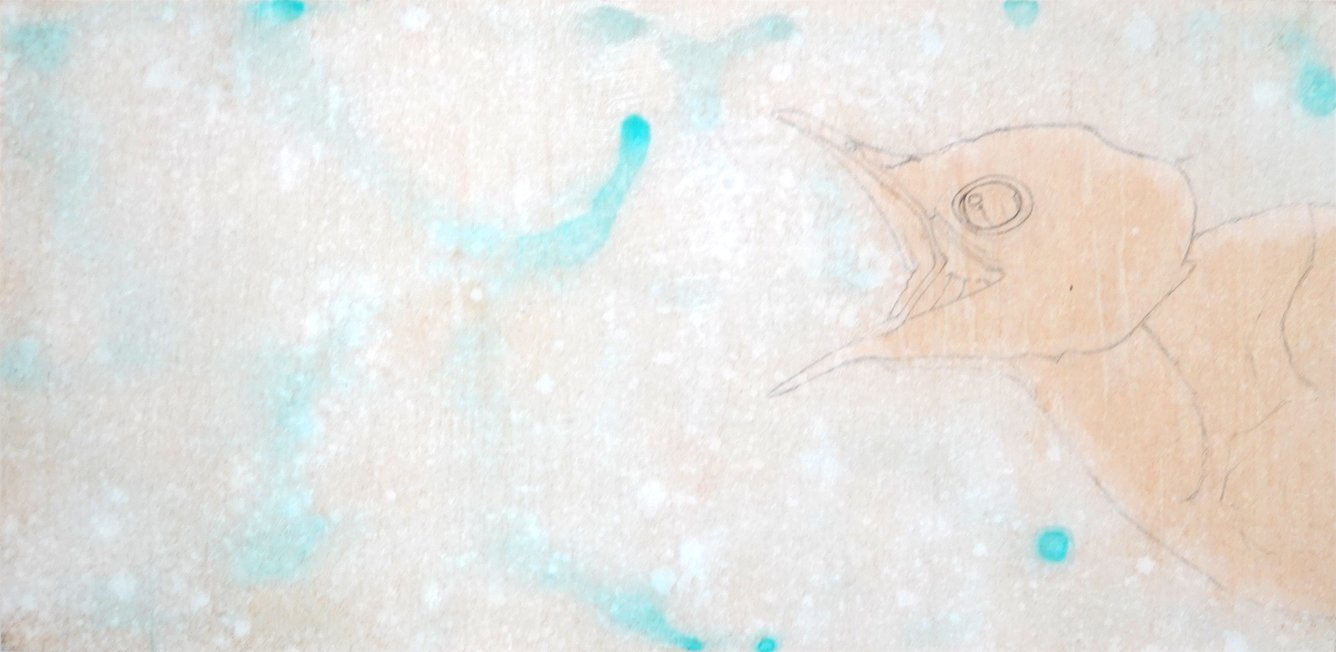As I mentioned in my first post about this painting, the coloration of the background comes from my novel usage of veterinary stains and medicine as art media, and I continued that color palette into the subject as well. However, there was a lot of trial and error in the creation of the background, and a cyan coloration that was produced ended up quickly going almost entirely fugitive (bleached out). I reinforced it with acrylic droplets as a final step, but as the painting continues to age, the background purple coloration is also beginning to fade. I may need to redo the whole background eventually, but right now I am adopting a wait-and-see approach!
This painting has already had a number of failed backgrounds, because two of the chemicals I tried to use for pigmentation clearly did not work from the start. The first I attempted was chlorhexidine, and the second was light green stain from Histology. “Wait a minute!” you might say to yourself. “Those chemicals are still listed in the mixed media!”
You’d be correct - I left them in because I kept sandwiching new chemicals between layers of acrylic medium, and I can’t be sure that some of those initial layers didn’t create the compositional effects that later resulted from the Diff-Quik methylene blue counter stain. That is the chemical that brought both the purple and strong cyan into to the background, but the cyan came from watering down or thinning out the stain and it began going fugitive quickly. The purple stuck around long enough that I thought it was permanent, but now it too is beginning to fade. I’ll continue to update you as to where this painting ends up, in terms of both aesthetics and process!





